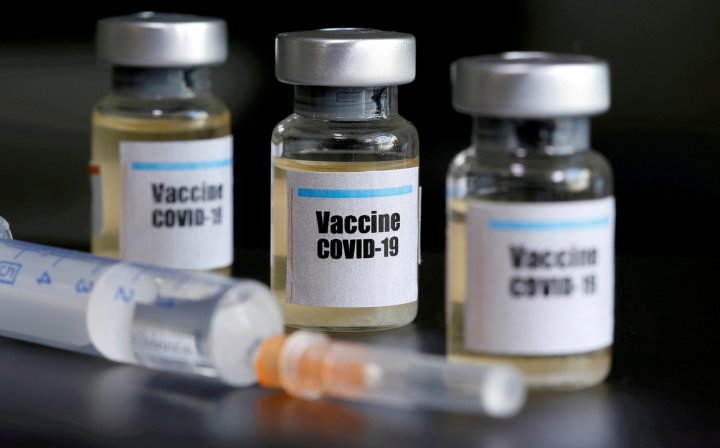As we enter year 2022, this report takes a sweeping look at the emergence of Covid-19 and year 2021, in numbers.
It also uncodes the pandemic and world response to it.
Specifically, this report will look at the following and their numbers:
…Covid-19, origin, cases and world spread
…Covid-19 variants
…Solutions to the pandemic
-Social distancing
-Remote working
-flight restrictions
-quarantines
…Vaccine
…Types of vaccines, doses ordered, efficacy rate and price
2021 has been an interesting year in that it revealed the difficulties of returning to a new normal since pandemic.
The new normal is how to live again and go about daily activities side-by-side Covid-19 pandemic.
Meanwhile, the old normal was how people lived and did things before the pandemic disrupted it.
So, while year 2019 originated the disruption of the previous ‘Normal,’ Year 2020 fully unleashed the disruptions.
Consequently, both years 2019 and 2020 released to the world the Covid-19 virus as we know it today.
The virus pushed the world to an abrupt halt and in the face of the virus, the world became hopeless.
Businesses shut down, countries locked down and schools went into hiding.
Wearing of nose masks, face shields, isolations and quarantines became the norm.
ALSO READ: EU Launches Compulsory Covid-19 Vaccine Passport For Entering Schengen Countries
Yet, hospitals became confused and overwhelmed while the virus continued to spread deaths, fear, symptoms and infections.
But year 2021 restored hopes with the ushering in of partial or complete remote ways to start life again.
So, remote processes, remote working, remote learning, remote shopping, remote governance – everything remote – became the way forward.
But how did we arrive at the pandemic in the first place and how are we currently faring with it?
Well, keep reading as this report shows you these answers in numbers too.
What is Covid-19?
COVID-19 is an acronym that stands for coronavirus disease of 2019.
This means that COVID-19 is a corona virus disease that started in year 2019.
The World Health Organization (WHO) on February 11, 2020 named as COVID-19, the disease caused by the novel coronavirus, SARS-CoV2.
SARS-CoV2 means “severe acute respiratory syndrome coronavirus 2.”
Also, WHO declared as pandemic, in March 11, 2020, the spread of SARS-CoV-2.
Similarly, the International Committee on Taxonomy of Viruses (ICTV), on 11 February, 2020, named the Corona virus, “severe acute respiratory syndrome coronavirus 2 (SARS-CoV-2).”
According to WHO, the ICTV named the virus Covid-19 because it is genetically related to the coronavirus responsible for the SARS outbreak of between 2002 and 2003.
SARS means severe acute respiratory syndrome. It is a disease caused by SARS-Cov.
Like Covid-19, SARS equally first originated from China, specifically, Foshan, Guangdong, in November 2002.
SARS infected over 8,000 people from 29 different countries and resulted in at least 774 deaths worldwide.
Covid-19, origin, number of cases and deaths according to countries:
SARS is not the original ancestor of the corona viruses.
In fact, corona viruses have been existing long before 2002 and 2019.
The Covid-19 and other coronaviruses have their ancestral origin dating as far back as 55 million years ago.
They also have their most recent ancestor existing around 8000 BCE.
However, the virus (Covid-19) as we know it today, first began towards the end of 2019.
It originated in Wuhan, China where the first case and variant emerged.
From there, it spread to many other countries as well as mutating into various variants.
Covid-19 cases by countries:
From that first case in China in 2019, the world has recorded over 200 million cases.
Data from Google news, as at 29th December, 2021, states that the total Covid-19 cases worldwide is 282,800,017.
The data also puts the world’s total death from the virus at 5,414,213.
Of these numbers, The United States (US) remains the country with the highest number of deaths at 819,201 with 53,168,862 total cases.
Closely following US is Brazil with 618,978 deaths and 22,259,270 total cases.
United Kingdom (UK) has a death toll of 148,021 and total cases of 12,338,676.
Germany has a death toll of 110,994 with total case of 7,059,396 infections.
While Canada has a total case of 2,031,576, it’s death toll is at 30,251.
India has Corona virus death toll of 480,592 and a total cases of 34,808,886.
As at 29th December, 2021, China had 131,315 confirmed cases of COVID-19 with 5,699 deaths.
In Africa, Nigeria has recorded 3,027 deaths and 239,019 total cases.
Kenya has 5,364 deaths and 285,654 total cases as at December, 29th.
South Africa has 90,854 deaths with 3,424,534 total cases.
ALSO READ: No Covid-19 Vaccine, No Job For You – Google Threatens Employees
Similarly, Ghana has so far recorded a total of 140,221cases with 1,283 deaths.
Likewise, Egypt has 383,003 cases and 21,667 deaths.
Going by the above data, you would observe that Africa has had the least number of cases and deaths.
Meanwhile, springing from the first case, the virus has mutated into many variants, as we discuss them below.
Covid-19 Variants:
Many variants of the Corona virus exist but the most common and aggressive ones plaguing the world currently are:
Alpha Variant:
This Corona virus variant has December 18, 2020 as its date of designation.
So far, there are 1,145,747 total cases of the Alpha variant.
Beta Variant:
The Beta variant also has December 18, 2020 as the date of its designation.
It has a total number of 39,304 cases so far.
Gamma Variant:
This variant was designated on January 11, 2021.
It has a total of 116,738 cases so far.
Delta Variant:
Of all the variants, the Delta variant has the most registered cases, report by cracktechnology.com states.
The first case was detected in December 2020 and ever since, over two million cases have been recorded.
Specifically, the total cases of the Delta variant so far is at 3,024,121.
According to the CDC, the Delta variant appears to be far more aggressive than previous variants as it is twice as contagious.
Omicron Variant:
Data from Statista states that the Omicron variant was first designated a variant of concern end
of November, 2021.
Consequently, the development in case numbers is still not very accurate.
However, it was designated a variant on November 26, 2021 and Statista reports 313 cases of the variant.
Lambda Variant:
This variant got its designation in June 14, 2021.
It is a corona virus variant of interest in that it has the tendency to impact on transmissibility, severity and/or immunity.
There are a total case of 9, 377 of the Lambda variant.
Mu Variant:
The Mu variant has same characteristic tendencies like the Lambda variant.
It was designated a variant of interest on August 30, 2021.
Currently, there are 13, 703 cases of this variant, according to data from Statista.
Meanwhile, regardless of which variant, corona viruses exhibit similar complications such as follows:
Covid-19 complications:
The following complications usually result from covid-19 infections.
The complications may include pneumonia, acute respiratory distress syndrome (ARDS).
Others include multi-organ failure, septic shock, and or, finally, death.
However, these complications are not without symptoms.
Covid-19 symptoms:
Different people who have corona virus infections show different symptoms.
Most infected people will develop mild to moderate illness and recover without hospitalization.
But the common and less common symptoms includes as follows.
Most common symptoms:
Fever, cough, tiredness and loss of taste or smell
Less common symptoms:
The less common symptoms are Sore throat, headache, aches, pains and diarrhoea.
Others are a rash on skin, discolouration of fingers or toes and red or irritated eyes among others.
Meanwhile, there are conditions where the virus can either exist or die.
Conditions where Covid-19 virus dies or exists the longest:
There are certain atmospheric conditions where the virus cannot exist. Yet, in others, it exists the longest.
Coronaviruses die fast when exposed to the Ultraviolet (UV) light in sunlight.
According to Livescience.com, Ultraviolet light is a type of electromagnetic radiation that makes black-light posters glow.
The UV light is responsible for summer tans, and sunburns.
Too much exposure to the UV radiation is damaging to living tissue.
Hence, corona viruses die when exposed to severe ultraviolet lights.
So, since most African countries have large amount of sunlight which means high UV lights, corona virus have had less death tolls in Africa as compared to other continents with less sunlight.
Conversely, like other enveloped viruses, SARS-CoV-2 survives longest when the temperature is at room temperature or lower.
Corona virus also survives longest when the relative humidity is low (<50%).
Because the other continents have more humid temperatures as against Africa, there have been high cases of corona virus and deaths recorded.
Nevertheless, this is just one of the many factors behind the variations in the cases among the world’s continents.
Other factors are higher risk tendencies among some age brackets, lifestyles and poor control measures.
Who are at higher risk of developing serious illness from COVID-19?
The World Health Organisation (WHO) says that older people and those with underlying medical problems are more likely to develop serious illness.
Examples of underlying medical conditions include cardiovascular disease, diabetes, chronic respiratory disease, and cancer.
WHO says older people are at more risk of developing severe illnesses from corona virus due to physiological changes that come with ageing and potential underlying health conditions.
World response to Covid-19 pandemic:
From Wuhan, the pandemic started spreading in March 2020, first in Europe and shortly afterwards, in the United States.
Between March and May 2020 recorded the first wave.
Similarly, from October 2020 onwards recorded the second wave.
The third wave of the virus is imminent, with many countries already experiencing the third wave.
The Omicron Variant has ushered in the third wave, expected to stretch through February of 2022.
Meanwhile, as the pandemic continues to surge, with new variants appearing, the world responded and keeps responding with many measures.
Countries, for instance, have launched both partial and complete lockdowns to stop the spread.
Also, countries have adopted compulsory quarantines and other measures as response to the pandemic.
Some of the safety measures include social distancing and use of hand sanitizers.
Others are wearing of face shields and nose masks to stop the spread.
Also, remote working, safety tips and campaigns also entered top gear.
Remarkably, the world developed vaccines to either cure or prevent the virus.
So far, there are a number of globally recognized vaccines against the virus. We discuss them as follows:
Vaccines against corona virus:
Vaccines prevent infectious diseases like corona viruses.
They work by preparing a person’s immune system to recognise and defend itself against a specific virus.
Immune system is your body’s natural defences.
There are many vaccines against the corona virus.
However, as at December 1, 2021, a total of eight (8) vaccines are officially in use worldwide.
We shall discuss them alongside their efficacy, number of jabs, doses and their prices.
In general, about 9.08 billion doses of vaccines have been administered across 184 countries as at December 29th, 2021.
This is according to data collected by Bloomberg.
The vaccines are as follows:
-
Pfizer/BioNTech: This covid-19 vaccine has a 95% efficacy rate.
The Pfizer/BioNTech COVID-19 vaccine is safe and effective.
It’s administration method into the body is through injection.
Each person must take two doses of this vaccine which requires a temperature of -70°C for maximum shelf life.
You should get your second dose 21 to 28 days after your first dose.
Each dose costs 13 US dollars.
Meanwhile, Pfizer/BioNTech COVID-19 vaccine takes 7 days after the second dose to work.
You will need to take an additional dose if you have a weak immune system.
You will take the additional dose at least 2 months after your second dose.
This should be followed by a booster if you are over 16.
-
AstraZeneca/ Oxford:
This vaccine has a 70% efficacy rate against covid-19.
The drug requires a temperature of +2/8°C for maximum shelf life.
Like the Pfizer/BioNTech, you will also need to take two doses of this vaccine to complete the vaccination.
Each dose of the AstraZeneca/ Oxford vaccine costs 5 US dollars.
-
Moderna:
This vaccine costs more than the other vaccines as each dose costs 25 US dollars.
You will need two doses of this vaccine to complete vaccination and it takes -20°C temperature to attain maximum shelf life.
The Moderna has a 90% efficacy rate against the corona virus.
-
Johnson & Johnson:
This vaccine has a 66% efficacy rate against Covid-19.
It requires +2/8°C temperature to reach maximum shelf life.
You will only need one dose to complete vaccination and each dose costs 10 US dollars.
-
Sinovac:
The Sinovac vaccine also has a 66% efficacy rate against the Corona virus.
With two doses to complete vaccination, it requires a temperature of +2/8°C to reach maximum shelf life.
This vaccine costs 18 US Dollars per dose.
-
Gamelaya Inst. (Sputnik V):
This vaccine has a 91% efficacy rate against the virus.
With two doses to complete vaccination, this vaccine requires a temperature of +2/8°C to reach maximum shelf life.
Each dose costs 17 US Dollars.
-
Bharat:
This vaccine requires a temperature of about +2/8°C for maximum shelf life.
You will need two doses of this vaccine to complete vaccination and each dose costs 15 US Dollars.
-
Sinopharm:
The Sinopharm Covid-19 vaccine has a 95% efficacy rate against the virus.
Also, the vaccine requires a temperature of about +2/8°C for maximum shelf life.
You will need to take two doses of this vaccine to complete vaccination.
Each dose of this vaccine costs 20 US Dollars.
Doses of vaccines ordered by countries:
As at 29th December, 2021, below are the total numbers of covid-19 vaccine doses administered according to countries.
US has given out 506,313,935 vaccine doses to citizens so far while Canada has administered 68,084,993 vaccines.
China has so far administered 2,695,181,000 vaccine doses.
Germany too has given out a total of 148,010,358 vaccine doses so far.
UK has given out 132,121,605 vaccines while Brazil has administered a total of 330,718,457 doses.
India has administered a total of 1,435,195,841vaccines.
South Africa has given a total of 27,850,779 vaccines to its citizens.
Ghana has so far administered 7,755,231vaccines.
Egypt has given out 52,819,190 vaccines to its citizens.
Nigeria, the giant of Africa, has administered 14,149,682 vaccines to Nigerians.
Implications:
Despite vaccinations, the virus and its variants have continued to infect people.
This call for continuous observance of the preventive measures that world governments have put in place to stop the spread.
From the data, we see that the Omicron variant has ushered in the third wave, especially in some African countries.
Also, this report has given account of Covid-19 so far vis-a-vis year 2021.
As we enter year 2022, it is imperative to note that year 2021 championed a return to a new normal of everything remote.
Was this report informative and helpful to you?
Type your comments below.
Found this interesting? Share!

























 and then
and then